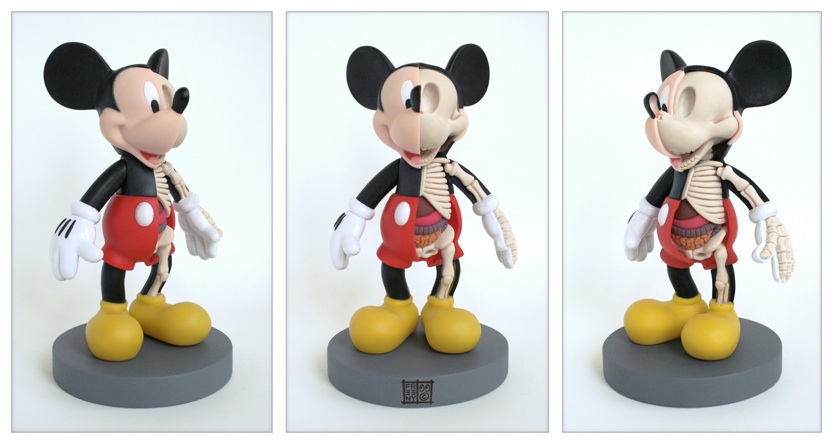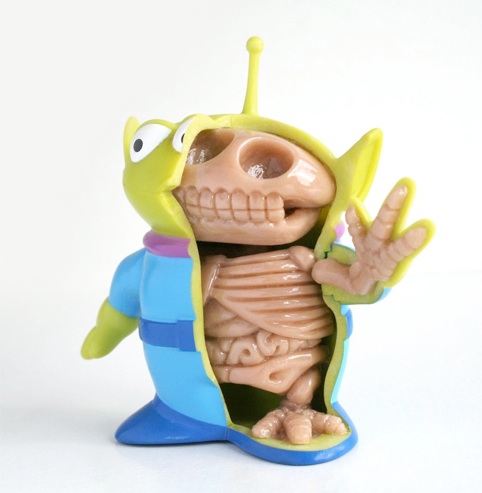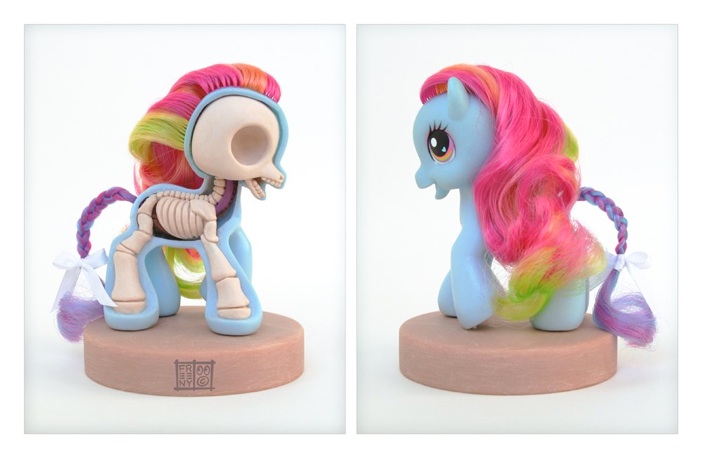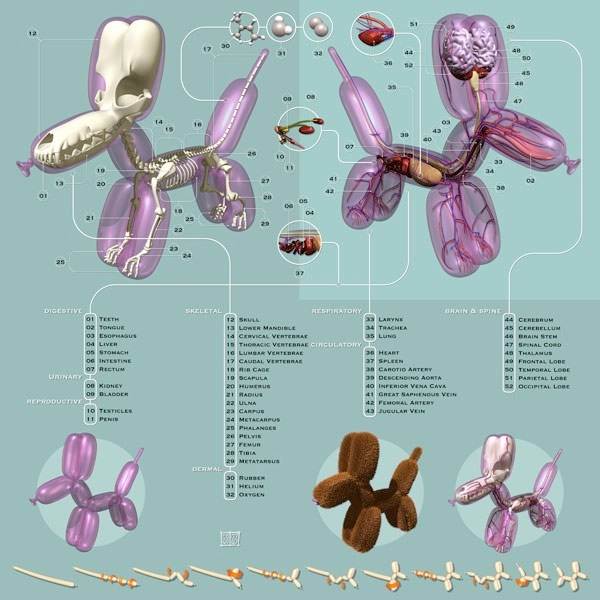
Image Credit: Jason Freeny Moist Productions
Elieen's viz. post from a few weeks ago on Justine Cooper's photo-documentation of the American Museum of Natural History in New York has been bouncing around in my head ever since. It (re)kindled a long-standing interest I've had in both natural history museums and slightly morbid kinds of art. In both digital images and sculpture, artist Jason Freeny invests familiar children's toys with anatomical interiors, suggesting an inner life/death that both unsettles and intrigues.
Along the lines of natural history displays, this Mickey Mouse figure in particular speaks to an archival and archeological interior. The iconic Disney character has been a part of American culture for nearly 80 years now, and, as such, has gone through a series of evolutions and "lives." By granting Mickey an inter anatomy, replete with full-color intestines and other innards, Freeny argues for a life outside our imaginations. Mickey is a living, breathing (even though we can't see his lungs) figment of our imaginations. Animated by humans in both senses of the word, Mickey exists as an entity both different from and similar to ourselves.

Image Credit: Jason Freeny Moist Productions
Despite his three eyes, toes, and fingers, the Alien's skeleton also seems familiar. This Toy Story figurine literalizes the conceit of the film where toys come to life in the absence of humans. The 3-dimensional medium of action-figure turned sculpture adds to the "liveness" of the figure. While recent studies on Tyrannosaurus rex fossils have led scientists to conclude the dinosaur may have been cannibalistic, one wonders what this skeleton might indicate about its vessel. If we can create a fictional world for him to live in, what would this intertior tell us about that world?

Image Credit: Jason Freeny Moist Productions
Though as a child, this image of a My Little Pony might have horrified me, my adult self finds it both amusing and fascinating. The statue gives the doll an inner life that I certainly dreamed of in my youth, and might not have been surprised to discover. I remember feeling that dolls and toys could be hurt and could heal, that I had to be careful with them, and that though they may possess magical powers (like the ability to fly) they otherwise operated on the same principles as I did. Maybe that was just me.

Image Credit: Jason Freeny Moist Productions
Freeny's digital work mimics traditional anatomical charts hung in doctor's offices and classrooms. I particularly like the dissonance created by a balloon animal with a skeleton. The instructions at the bottom of the image demonstrate how to create a balloon-animal dog, and this strikes me as paralell to the evolution of a zygote. The poster suggests that we can call these creatures into being, and through their creation, invest them with life.
I wonder if the anatomical charts would be a useful tool for teaching anatomy to kids? I can't decide if they would disturb or delight. Biology never interested me much, but maybe it would have if interiors were more fictive and imaginative.
Comments
Morbid Anatomy
Thanks for the shout-out, Cate. If your appetite for anatomical grotesquerie has been whetted, check out Bioephemera’s fascinating post on late-18th-century obstetrical models, which, as she describes them, “represent women simultaneously as ideals of graceful femininity and as puzzle boxes of removable parts” (a nice tie-in to your recent Barbie-cam post as well):
http://scienceblogs.com/bioephemera/2008/02/wombs_waxes_and_wonder_cabin...
You can also find a vast collection of eerie anatomical images at the Morbid Anatomy blog’s flickr page:
http://www.flickr.com/photos/astropop/collections/72157601772904023/